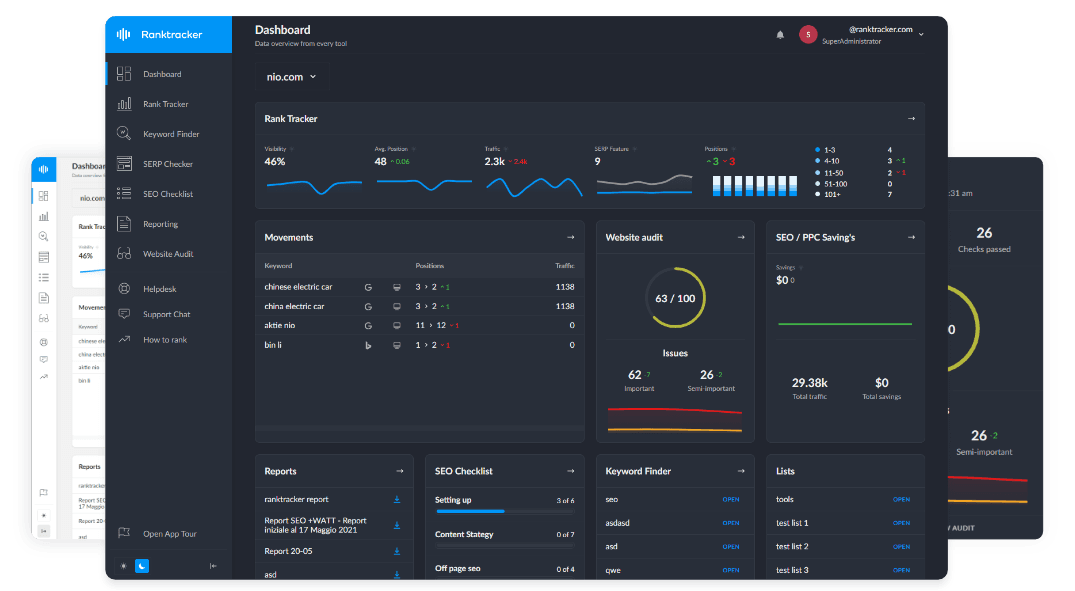Intro
Search rankings sometimes freeze in place even when you keep posting new articles and tweaking tags. Clicks stay flat, visitors do not grow, and it feels like the site is stuck at a red light that never turns green.
Knowing why such a stall happens can reveal clear steps to get moving again. By looking closely at how query goals, page overlap, and extra result boxes affect placement, you can spot hidden issues, fix them fast, and turn a flat line on the graph into a steady climb.
Figuring Out Search Slowdowns
When Progress Stops
Web pages can sit in the same place on Google for weeks even after new posts or small edits. Visits stay flat, and clicks do not climb. This flat line shows your usual tricks have run out of steam. The stall is not always your fault. Most times it means the plan has already given all it can. Spotting this stuck moment early lets you change course before numbers fall.
Why Numbers Quit Rising
One big reason views stay flat is that articles no longer match what readers want right now. A guide that once hit the mark may feel off when people start looking to buy rather than learn. Hidden site troubles add to the standstill. Slow load time, weak phone layout, and tangled links all drag pages down. A short list of major key words also hits the ceiling fast because the fight for those terms is fierce.
Limits of Basic Rank Logs
Trouble with Fixed Spots
Seeing a term sit at place five seems steady, but that figure alone misses the full story. A video box or answer card might steal every click above your listing, so the true win score is lower. Fixed spots also ignore where the reader lives, the gadget they hold, and their past browsing. A report from one city or device may not match what most visitors see, leading to wrong moves.
Averages Hide Real Movement
Tools like to give a mean rank. This single number smooths out wild swings that could warn you of a problem. A term jumping between place three and twelve all week might average at seven, but that hides the roller-coaster ride. Sharp dips often link to a rival’s new post or a fresh Google tweak. If you only peek at smoothed data once a month, you miss these signals and react too late.
Sharpened Position Study
Looking Past Simple Places
A deeper check studies why a page moves up or down, not just where it lands. It watches changes over days, checks new result boxes, and asks if the article still answers the latest queries. A close view shows when a rival wins a video slot or when two of your pages fight over the same idea. With strong clues in hand, you can fix the real issue instead of just guessing.
Main Parts of Deeper Checks
Topic Packs over Lone Terms
Grouping related words paints a bigger picture of how people look things up. Landing well for a whole pack proves you own the subject, which Google likes more than one lucky hit. These packs also reveal holes in coverage. If you rule five words in a family but miss the sixth, you know where the next post should go.
Purpose Charts for Queries
Every lookup hides a goal like learning, choosing, or buying. Mapping each term to its goal shows if the page meets that need. A how-to piece that now sits in a shopping-heavy results page must shift tone or format to climb again. When aim and content match tight, readers stay longer and share more, sending happy signals back to the engine.
Watching Extra Result Boxes
Modern pages show clips, quick answers, maps, and store cards. These extras push plain links lower. Keeping an eye on which add-ons appear helps explain sudden drops in clicks. Knowing a rival owns the quick answer box lets you tweak your layout, add clear bullets, and chase that spot instead of fighting for a lower plain link.
Page Overlap Scans
Two articles on your own site aiming at the same word can confuse the crawler and split clicks. A scan for overlap finds these siblings. Merging them or changing one target clears up the muddle. A tidy-up also often lifts the winner fast because all links and trust now point to one clear choice.
Clicks Compared to Place
A high spot with poor clicks means the title or blurb fails to hook. Tracking the click number next to the rank points out which lines need fresh verbs, new facts, or a clearer call. Small edits here often bring quick gains since the page already shows near the top and only needs a bit more tuning.
Moving Past the Stall with Fresh Clues
Match Current Reader Goals
People change what they want from the same term over time. A keyword that used to pull up long guides might now show shop pages first. Comparing today’s results to your post tells if the fit is off. Shift the piece to fit the fresh mood. Add prices, step lists, or quick videos based on what the new top page looks like. Matching the vibe helps the post slide back upward.
Cover Every Step of the Path
Many sites focus only on broad facts that sit at the start of the buyer road. This brings views but not sales. By adding mid-road checklists and end-road reviews, you greet folks at each step. Mapping words to these steps and writing matching pages keeps visitors on your site longer. It also actively moves them toward the signup or sale.
Read Old Position Lines
Plot places over months to spot gentle slides or steady climbs. When a slow dip lines up with a code change or a rival launch, you know what broke the rise. React early by updating the piece, adding links, or fixing speed before the dip turns into a drop.
Gear and Methods for Better Tracking
Tools that Show More than Number Spots
Pick trackers that give full page previews, note device type, and sort terms by intent. Extras like shake graphs show if the top ten list is calm or wild today, warning you of fresh shifts. Such detail tells if a fall comes from your page or from the whole list reshuffling.
Blend Search Console with Site Stats
Console shows which lookups show your pages while site stats tell if visitors stay or bounce. Putting them together spotlights terms with many views but weak clicks or quick exits. Such pages will then need sharper titles or better layout. A blend also shows which words bring sales, guiding where to spend time and links.
Check What Rivals Do Better
Track for shared terms to see what style or depth wins now. Maybe rivals add fresh data, more pictures, or stronger outside links. Companies like Geaux SEO can help guide these moves with tailored strategies that fit your niche. Copying the good parts while adding your own twist often closes the gap fast.
Updating Tactics After Fresh Data
Polish and Add to Current Pages
Swap old stats for new ones, fix broken links, and add missing angles found in question boxes. These light tweaks keep pages fresh in the crawler’s eyes and offer readers up-to-date help. Extra sub-topics also pull in related terms, broadening reach without new URLs.
Use More Kinds of Media and Depth
Text alone may not earn top slots when clips and charts crowd the screen. Turning key tips into a short video or adding an interactive tool keeps visitors longer and fits modern result pages. When rivals post deep dives, match their length or add unique quotes to stay equal or better in value.
Dig into New Term Groups
A flat graph hints you have mined the main set dry. Look sideways for close topics rising in buzz. Turn keyword tools to questions, slang, or long strings to spot these fresh areas. Writing early on new angles lets you rank before the race gets crowded.
Real-World Impact: What Smarter Rank Analysis Can Unlock
Immediate Wins
A tighter look at ranking behavior often sparks quick improvements. Refreshing titles with stronger action words pushes pages higher in click lists, while cleaning duplicate posts lets one clear front-runner soak up all incoming link credit. Small layout fixes, like adding bullet points or short clips, can claim answer boxes and video strips that sit above plain links. These rapid gains prove that even light tweaks guided by better data beat guesswork every time.
Beyond clicks, visitors start staying longer once pages speak directly to their questions. Lower bounce tells search crawlers that the material truly helps, nudging those URLs even higher. In only a few weeks, graphs that once lay flat begin trending upward, showing the payoff of targeted edits.
Mid-Term Breakthroughs
After the first wave, the next leap comes from filling holes along the customer path. Adding comparison charts for shoppers or step-by-step guides for learners covers more search aims, which widens reach without starting brand-new domains. Grouping related search phrases also builds clear subject hubs, helping engines see the site as a trusted source on bigger themes rather than scattered facts.
With stronger internal links pointing toward these hubs, authority flows smoothly through the site. Rival pages that once outranked you for cluster terms start slipping, as engines reward the clearer, deeper structure. Orders, sign-ups, or other goal ticks follow, turning extra visitors into real wins.
Long-Range Growth
Continuous checks prevent future stalls. Scheduling monthly scans for load speed, mobile fit, and new rival moves keeps the site nimble. Spotting early dips linked to algorithm shifts also lets you patch issues while competitors scramble. Regular updates further keep content fresh, and signal added value.
Over time, this cycle creates compound benefits. More trusted pages draw natural links, which then lifts newer posts. Expanded term families open doors into fresh markets, supporting steady expansion rather than one-off spikes. In the end, smarter tracking turns search optimization from a series of fixes into an ongoing engine for stable, predictable progress.
Endnote
A flat line in Google does not mean the game is over. It means the game has changed. Looking deeper than rank numbers exposes hidden issues and fresh chances. Use simple checks like goal tracking, overlap fixes, and reader intent matches to turn stalls into steady climbs. Keep watching, keep polishing, and growth will eventually follow.

